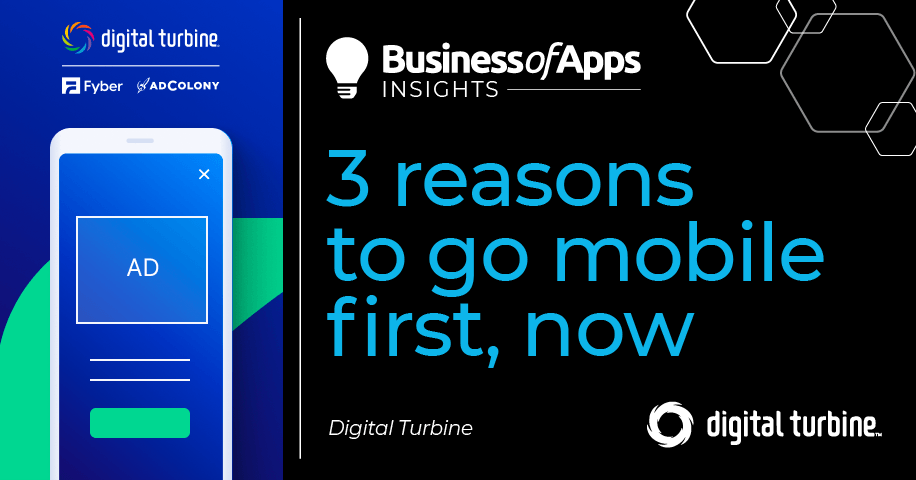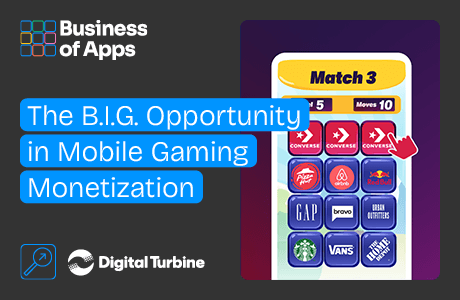The past couple of years have been a deeply turbulent time in the online advertising ecosystem with Google’s announcement of the deprecation of cookies alongside Apple’s introduction of ATT and deprecation of the IDFA, all creating difficulties that online advertisers have had to overcome. These challenges have best been exemplified by Twitter’s sale of MoPub, which served as a confirmation of their struggles to create strong partnerships with advertisers.
In order to secure long-term advertising success, advertisers need to seize opportunities they know will ensure strong ROI. Moving to operating in the in-app environment can help advertisers by providing a stable, growing ecosystem to thrive in.
Why web advertising is running out of time
Whilst functionally the mobile and web ecosystems may be similar, they are polar opposites in terms of the results that marketers can expect to see from distributing their ads on them. For example, the web environment can be extremely hit or miss. Of course, if you are a huge brand, you’ll always pick up users but, as a less well-known competitor, you can often find yourself barking up the wrong tree.
Additionally, the future of web advertising without cookies doesn’t look like the 100% safe bet it is now. Without cookies, it is far more likely that ads will be seen by a broad range of people, hitting a diverse audience of whom – potentially – only a small number are going to be actively enthused by your products or services. This is only going to get worse as precise user data becomes ever more difficult to access and interpret, meaning that web advertisers will have to rely on contextual targeting, rather than the wealth of individual user data that is currently available. Finally, advertising in a web environment is less secure. You have no visibility over whether your performance ad is being clicked on by a real person, or if it is being spammed by bots. These fake actions are far harder to replicate in an in-app environment.
Of course, this isn’t to say that advertising on mobile doesn’t also come with its own set of concerns, but there are some safeguards on mobile that protect user privacy, and allow for effective advertising.
Cohorting is the way forward
In-app advertising stands apart from its web equivalent in several ways. The most important of these is the ability to create user cohorts and group app users according to their habits and preferences. This is a very simple practice whereby app users are served ads that are relevant to the app they are currently using. A user playing Candy Crush might be suggested other Match-3 style games, for example. The advertiser knows the interest is there and, as a result, can ensure a level of interest that a web advertiser can never be guaranteed. This breeds higher engagement with ads and helps to ensure the success of mobile in-app campaigns that web campaigns struggle to replicate. By combining relevant content with exposure to a brand over time, in-app advertisers can foster brand familiarity and, in turn, increase the likelihood that a user will engage with an ad.
Indeed, this strategy of cohorting users has proven so effective on mobile over the years that it forms the backbone of Google’s – ongoing and delayed – plans to deprecate the cookie and offer privacy-safe solutions for advertising on Android in a couple of years.
In-app has higher ROI
Nowadays, it is the norm for online advertisers to be limited in the number of partners they can work with, as they are usually consigned to playing by the rules of one or two industry leaders. By comparison, in 2021, Singular reported that the top mobile gaming companies were working with an average of over 28 partners to power their advertising strategies. Through having the ability to work with a wider range of partners, in-game advertisers can harness various data pools to optimise their ad strategy.
Additionally, when a marketer buys mobile app inventory, they have infinitely more information than a web advertiser has with oversight of three key areas that allow them to assess the effectiveness of their in-app strategy.
The first of these is visibility over app-user data, which provides insight into the effectiveness of in-app ads. There is a range of information – from audience sizes, and audience demographics, through to average time spent in-app by users – that publishers can share with advertisers. This allows marketers to understand the size and broad demographic qualities of the audience they are speaking to and quantify their investment based on solid data.
What’s more, when bidding on specific in-app inventory, advertisers can have a far more concrete sense of the formats their ads will be presented in. This means they can select the inventory that best applies to their objectives and even build sequenced ads into their campaigns to accompany individual users and increase UX in the longer term.
Lastly, and perhaps most importantly is the ability of in-app advertisers to address relevant content to users. Thanks to the IDFV, users of particular apps can be identified by publishers. This allows developers to have visibility into user preferences, and the kinds of content they are more likely to engage with, which allows for strong, cross-promotional ad campaigns, without compromising user privacy. Depending on a user’s privacy preferences, this can help developers enable tailored ad experiences for users who choose to share certain parameters.
The most important step when being privacy-aware is to work with what you have!
The big loss on all devices without user IDs is the inability to create defined audience profiles without compromising on user security and – potentially – falling afoul of data protection laws. This is where the ability to form user cohorts, based on preferences, in an in-app environment helps to future-proof this ecosystem for advertisers.
Simply put, by grouping unidentified users based on the apps they spend the most time engaging with, everyone ends up a winner. Irrelevant advertising is phased out, user privacy is protected, and advertisers ensure their content ends up in front of the right eyes.











